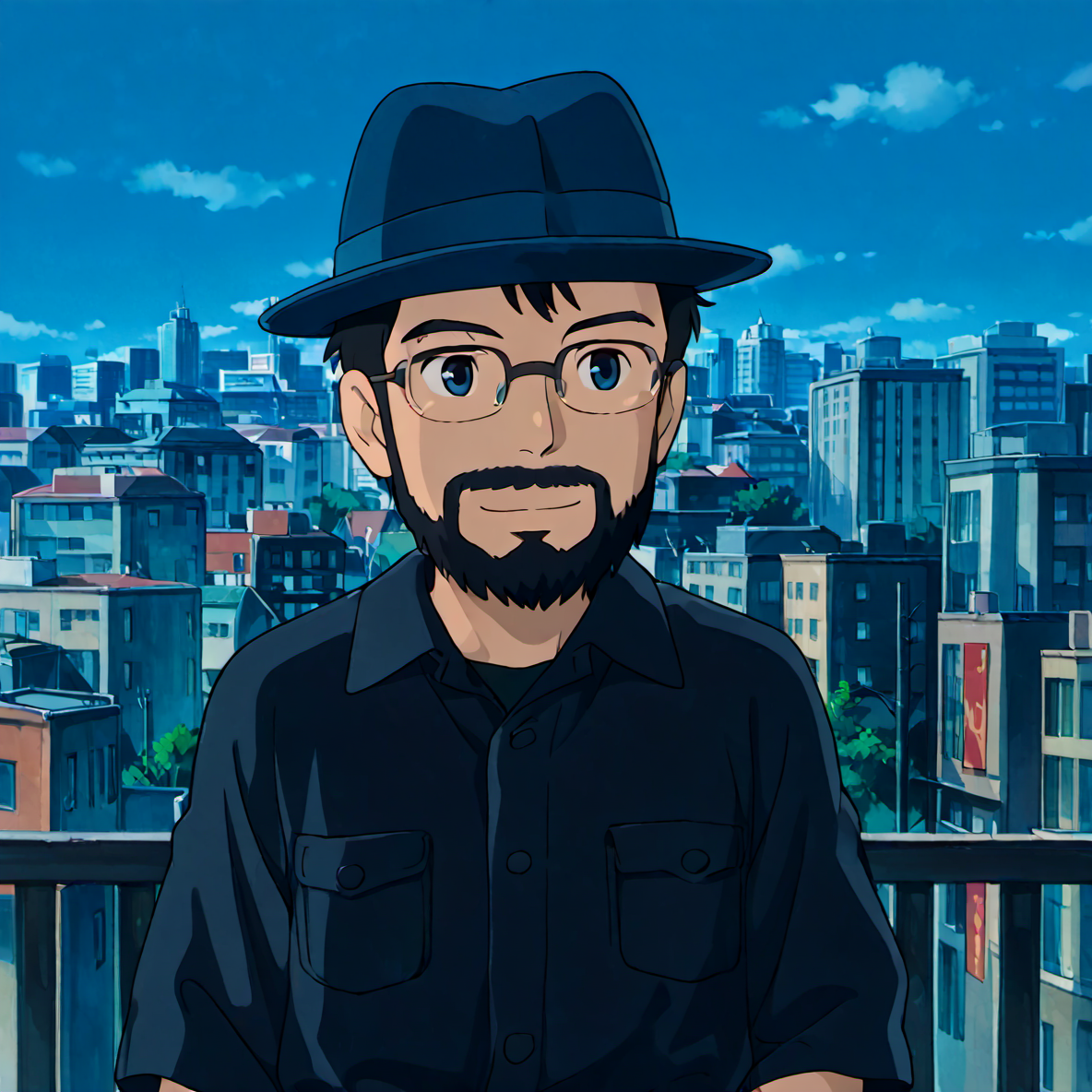I am running Fedora 39 right now and the last time I did a distro upgrade my graphics drivers were a huge PITA. Did your upgrade to 40 went smooth?
Absolutely. It broke any leftover intention of ever trying Ubuntu again.
I tried Ubuntu recently out of curiously. It was buggy, slow and contained a lot of promotional material. For context, I hadn’t used it since a wipe my machine after they forced snap.
I think that the last time I used Ubuntu was like 10+ years ago. Too many awesome distros out there to remain on it, and even then, it was already broken.
deleted by creator
All good on my device but I use fedora atomic. If it wasn’t good, I could just roll back.
Does Fedora atomic use a rolling release model?
No, it’s image based.
You can always use the testing image if you want
No they just package the exact same versions, but differently. It uses rpm-ostree which is like Git but for operating systems (binaries).
A quick tour through Atomic Fedora
It relies on a main image, which could just be used like that. This is a minimal Fedora install, containing everything thats needed and nothing more.
You would then install apps via Flatpak, Appimage, binaries, Toolbox etc.
Or you can layer RPM packages, and you can install everything as on normal fedora. This will make updates a bit slower but is usually needed for small things like a different shell.
These packages will be kept updated in parallel to the OS. The OS is always 100% what Fedora ships, while the RPMs come from all the repos you can imagine, COPR, rpmfusion etc.
Rpm-ostree pulls down the update and the packages are added to that. But instead of modifying the current OS, it clones it, using the current one, and the differences (updates) that are downloaded.
This new image is now either complete, or gets the wanted RPMs added or removed. The new image is then set as new boot target.
You can use your system how long you want, but when you reboot (and this takes not any longer than a regular reboot) you will boot into the new version.
If something broke, you always have the last system kept. You can increase that number, so only the x-th last image gets automatically deleted. And you can manually
sudo ostree admim pin 0the current system, if you know it works well and you have for example a driver update, or a big system update, and want to be sure you will have this as backup.You can also rebase, which means your system will now mirror a different repo of theirs. For example from Silverblue (GNOME) to Kinoite (KDE). This will change everything so that you now 100% have the packages of the new repo, failsafe.
If it would fail, the update would cancel and you dont get one.
So remember:
- the system by default is 100% the one that Fedora ships. No manual upgrades, no strange “cant reproduce on my system” conflicts, nothing.
- you can still install all RPMs you want
- you can remove RPMs from the system
- you can reset the system again to be 100% upstream
- you can rebase to a different variant. Like Fedora to uBlue, including NVidia drivers and some packages. Or advanced images like Bluefin/Aurora, or Secureblue variants
- updates either work 100% or fail
- you will always have a fallback system (not only a kernel, an entire system) and you can keep as many as you want, forever
So basically: rpm-ostree gives you the needed control to have a stable OS.
But still not everything is “immutable” /managed with rpm-ostree. Your entire
/varis mutable, and/etcand/homeare symlinks from that. This means you can configure and break what you want, which can also be problematic.Note though, that the vanilla
/etcfiles are stored in/usr/etc, so you can restore them. Make sure to exclude crypttab, fstab and a few more!If someone is interested in the atomic concept, i would recommend looking into uBlue. It offers the Fedora atomic spins with a lot of tweaks applied that take the user experience to another level. Everything is just hassle free. Highly recommended! There are separate images with tweaks for gamers and developers.
Thx, that was what I needed to understand Fedora atomic a bit better. Cool concept!
Same, still have Kinoite 39 pinned to be safe (even though I imagine rolling back would cause tons of broken dotfiles), but didnt need that.
Dotfiles are really the issue.
Version control the dot files.
How would this be done?
I have had a LOT of issues, but they’re mostly of the papercut variety - and most of them have to do with Plasma 6 rather than Fedora 40 itself (at least I think so).
I think my CPU is running hotter on 40 than it was on 39, though.
Yeah nearly all Fedora KDE issues are direct upstream Plasma issues. And not too many, tried Plasma 6 on Kinoite Rawhide for a while and reported a lot of them.
You can do the same with COSMIC and help make their release better!
That doesn’t sound promising, though I am using Gnome, so at least my DE is not getting the biggest upgrade :)
Yeah, Gnome 46 has been a really solid, small upgrade in my experience. I swear it’s made things smoother and more consistent, plus some of the minor visual tweaks and refinements are welcome. Turns out a lot of what they did is under-the-hood optimizations and improvements to accessibility, so the Gnome desktop update itself has been a small but welcome improvement.
So far I haven’t had any issues elsewhere I’m Fedora 40, but maybe that’s because I’ve checked for new updates pretty frequently and done some restarts since the upgrade, that might be keeping things fresh.
Yes. Numerous COPR repos not updated aside, my sddm theme broke and doesn’t detect Qtgraphicaleffects (which is installed). You know what the weirdest part is? There are 2 “dependencies” for the theme: quickcontrols and graphicaleffects, and luckily, quickcontrols was detected properly. I ended up rewriting the theme, and while it works, it is far from where it needs to be. Safe to say, I’m very annoyed.
Edit: I actually did a clean install, as I tried some other distros a few days before F40 released.
So those are either random 3rd party problems (please contact the COPR maintainers, there is Discourse integration) or direct Plasma issues :D
I was also a bit hesitant to already upgrade, as I tried Plasma 6 before and it wasnt perfectly stable, but I actually havent had any issues yet.
3rd party stuff of course
- minimal desktop indicator
- video lockscreen (ironically had a Qt5 bug with seemless playback that may now be fixed)
Some extensions have alternatives like Thermal Monitor, but upgrading was unintuitive. It needed removing and adding back.
I don’t use plasma so definitely not plasma issues. I use SDDM on the Sway Edition and then install Hyprland as my Wayland Compositor of choice.
I think SDDM is mainly maintained by Plasma people? But I dont know.
I upgraded from 39 to 40 and I think the only issues I had were:
- Background I was using got removed, got a better one anyway
- A few gnome extensions stopped working and I had to update them or find an alternative
- Had to re-create virtual disk mapped to real disk for booting windows installation in virtual box (there is a sonicwall VPN I have to use for work which only works on Windows)
I think that was it!
I have had some strange behaviour from Firefox saying it’s become unresponsive a few times and at the same time Thunderbird but that seems to have fixed itself now
- Background I was using got removed, got a better one anyway
I had that happen a few times. This time I downloaded those backgrounds again (from gnome-backgrounds repository). Still, it’s pretty annoying to have this happen.
I upgraded just before the beta. Discovered a mutter crash, reported it, it was fixed in a day or so.
Nope, not at all. Silverblue here (GNOME), and the upgrade went smooth, nvidia drivers and all.
very nice
Had no problems even on KDE spin. Upgrade from KDE 5 to 6 went smooth
qt was stuck with 5.15 because the telegram app depended on it (sigh). Had to do a
dnf upgrade --best --allowerasingfor the update to qt6 (and the removal of telegram lol).But now everything works fine.
There is a flatpak available for Telegram if you need it 😃
Yeah i know, i just prefer to use the distros native package manager. That said, i use the jellyfin client from flathub and that one now warns me as well that it depends on qt5.15 (works fine though, since flatpak can have multiple versions of dependencies).
I moved to 64gram,and that took care of that.
I cant update because of sunshine
Average Linux user
No f40 version? Is there a spec file? Should be possible on COPR
I got it from github https://github.com/LizardByte/Sunshine/releases. I just updated it
You can install sunshine on Fedora 40 with their COPR repo. Their GitHub releases lag behind on OS releases, but the COPR is automatically configured for new versions of Fedora since it doesn’t rely on compiling in a Docker container. Haven’t tried it myself, but it was recommended on their issues page.
I updated and now kde connect wont run without kde. Any alternative to open urls from android
There’s a GNOME extension GSConnect that uses the KDE Connect backend if you’re on GNOME. I haven’t used it in awhile since switching to KDE, but it worked well when I used it.
As far as KDE’s documentation says though, you should be able to use it on any DE. What exactly is the problem you’re experiencing? Will it not start, will it not connect (if so try re-pairing), or is there functionality that is missing?
It says it requires kde desktop but the cli works so i set it to autostart on hyprland. One thing tho is i cant type from the app but i got sunshine for that
The remote input issue is related to Wayland, and currently all wlroots based compositors (including Hyperland) have issues with this. KDE Plasma has merged support for remote input to work with KDE Connect, however many other DEs do not have the support merged, and will have to rely on xdg-desktop-portal-wlr to implement it. Here are the related bug reports and issues:
https://bugs.kde.org/show_bug.cgi?id=448604
https://github.com/emersion/xdg-desktop-portal-wlr/issues/2
https://github.com/hyprwm/Hyprland/issues/1775
Also, it seems the other issue is unrelated, are you seeing an error on the command line, or is there a dialog popup, and can you quote what is said? I’m having trouble finding any related issues anywhere on GitHub, even the Hyperland issues around remote desktop did not seem to have this particular error (or didn’t mention it at least).
Everything went smooth for me though my install is fairly pedestrian.
It’s a solid release. The only thing that broke were some plasma widgets not yet available for KDE 6.
It was going perfectly smooth (Plasma 6 wayland, amdgpu drivers); though the past week or so I started getting random shell crashes. (It’s very impressive that Qt apps all come back unscathed – but I don’t use too many Qt apps.)
I decided to upgrade, and so far everything is working fine. I had some hiccups after the installation, but a reboot fixed all of them. Thanks for your input :)
Audio was a little flaky one time and creating virtual machines with TPM is broken unless you disable selinux
I get SELinux warnings related to Proton/Wine (something about “execheap”), but everything still works as it should.
I also had a problem with one of my displays not working until I turned “dim screen after xyz” off (will have to look up what that setting was titled) in KDE. That is a weird issue as it completely crashed the display, even connecting to other computers doesn’t work unless I unplug and replug the power of the display.
Other than that, worked fine so far and I’ve been using it since the beta.
I had to depmod -a, before then my gaming was messed up.
Honestly? I found it suggested on that other site. Something to do with the kernel modules. All I know is that I had no working GPU, ran that, rebooted, and then everything was gold.
what does
depmod -ado?It fixes your games apparently













